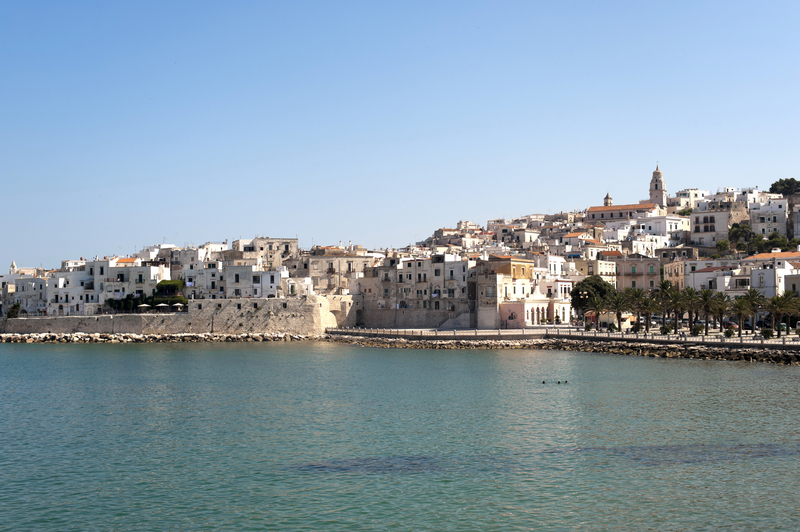Foggia is the second largest Province in Italy and the capital of the province is the city of Foggia, which is best known for the beauty and natural wonders of it richly diverse landscapes that includes sandy beaches, rolling mountains, and large fertile plains. This region of Italy is famous for its agriculture like wheat, tomatoes, and watermelon.
During World War II, the city of Foggia was considered the center of communications between the north and south, and because of its position the city was bombed by the allies to near destruction. Bombing during the war and several local earthquakes were responsible for the necessity to rebuild, which accounts for the modernization of Foggia.
 Castello (Lucera)
Castello (Lucera)
The Castle of Lucera dates back to the 13th century and is located in Lucera in the province of Foggia. Built in 1233, the castle was built on the foundations of a Romanic cathedral from construction materials acquired from the remains of nearby Roman buildings. In 1456, the Castle barely survived an earthquake and was nearly destroyed. Tourists rarely get to visit such an ancient site rich in centuries of history.
San Giovanni Rotondo
The Shrine of Padre Pio, the home of the tomb of Saint Padre Pio of Pietrelcinais who died in 1968, is the world’s second most popular Catholic shrine. The tomb is installed inside the stunningly beautiful Santa Maria delle Grazie (Church of Our Lady of Grace) where visitors can view the cell of Saint Padre Pio, see his confessional, his crucifix, and the carefully preserved remainder of his earthly possessions. Nearby, traces of ancient cultures dating back to the 4th and 5th millennium B.C. are visible and the history of the town dates back to the year 1095.
Foresta Umbra
The Foresta Umbra in Foggia is all that remains of the ancient forest of oak, beech, Turkey oak, hornbeam, fir and chestnut trees that once covered the majority of Central Europe. In the spring, Foresta Umbra blooms into a lavish lush forest filled with indigenous vegetation where local wildlife abounds. Visitors get a rare view of ancient beech trees, volcanic rocks (Black Stones) and the Sanctuary of San Nazario. The Foresta Umbra is open for tourists to explore on guided jeep tours or on their own.
Tremiti Islands
An archipelago consisting of three main islands, San Domino, San Nicola, and Capraia, is located off the coast of Gargano, and is known as the Tremiti Islands. The Tremiti Islands offers tourist a chance to experience unspoiled nature with spiking cliffs, caves, and crystal clear waters rich in fish resources. Several of the local caves are home to native monk seals. The incredible calcareous rocks, arcs, and caves are contrasted against the arrival of modern accommodations and restaurants that serve locals and tourists.
Gargano National Park
The Gargano National Park provides protection for the Sipontine Marshes which are a natural reserve for thousands of bird species. Under the protection of the Gargano National Park, wildlife and the vegetation of the marshy environment thrive. A visit to the Gargano National Park gives tourists an opportunity to experience natural ancient marshes and rare species of wildlife in their natural habitat. Gragano National Park is a photographer’s dream come true.





